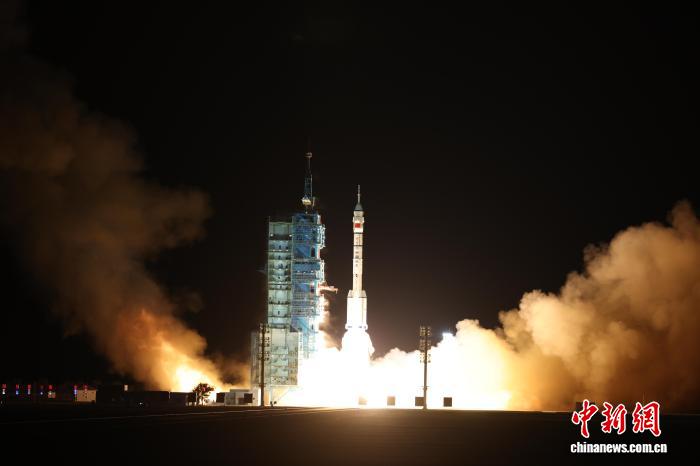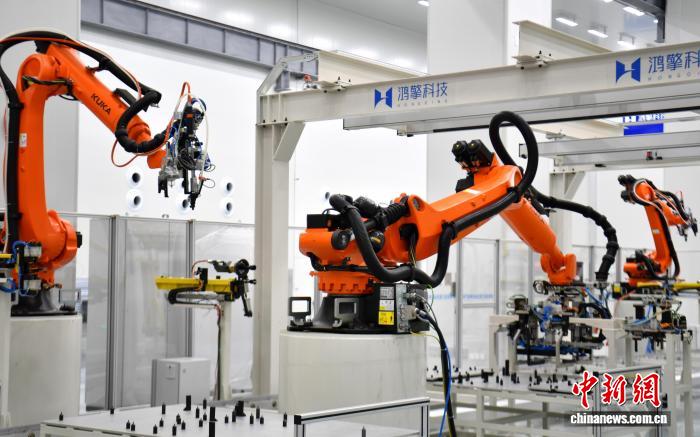China's space exploration unlocks deeper understanding of universe
China's space exploration has been helping unlock a deeper understanding of the universe, from Earth to the moon; from Mars to the infinite universe.
FROM EARTH TO MOON
With multiple satellites launched, China has largely completed its High-resolution Earth Observation System, providing land observation services. The country can also view waters around the globe on all scales and observe the global atmosphere to boost disaster response capability.
China's success of the Chang'e-5 mission marked the conclusion of a three-step lunar exploration program that consisted of orbiting, landing on the moon, and returning with samples.
The Chang'e-5 mission was China's most complicated systemic space project that required the most diversified technologies. On Dec. 17, 2020, the return capsule of the Chang'e-5 probe brought back the country's first samples from an extraterrestrial body.
Last July, the China National Space Administration released the online database of the second batch of lunar samples brought back by the Chang'e-5 probe. Researchers and the public can access the Lunar and Deep Space Exploration Scientific Data and Sample Release System via the website www.clep.org.cn, where they can apply for data and samples. The first batch of the lunar samples, about 17 grams, was delivered to 13 institutions in the same month.
The analysis of the data sent back by Chang'e-5 lander is also yielding results. A study published last month showed that the moon had turned drier within a certain period, probably due to its mantle reservoir's degassing. The findings provide more clues for future lunar missions as crewed lunar stations are in the pipeline in the following decades.
FROM MARS TO INFINITY
Last May, China landed its Mars probe, Tianwen-1, on the red planet, ushering in a new chapter of China's deep space exploration and marking another contribution to humanity's exploration of the universe.
The Mars rover Zhurong has traveled more than 1,200 meters on the planet and is currently heading toward a region that might have been the coastline of an ancient ocean, looking for clues about Mars' evolution.
China's first solar exploration satellite, launched into space last October, is sending data on solar flares back to Earth. It can deepen our understanding of the sun.
Shrinivas R. (Shri) Kulkarni, George Ellery Hale Professor of Astronomy and Planetary Science at California Institute of Technology, told Xinhua in an interview last year that the universe is much stranger than people think. However, building astronomy telescopes is very expensive and no country can do astronomy all by itself.
He noted that China's telescopes like FAST and HXMT had become driving engines for discoveries.
Last March, China announced that its Five-hundred-meter Aperture Spherical Radio Telescope, or FAST, could be accessed by astronomers worldwide.
Located in a naturally deep and round karst depression in southwest China's Guizhou Province, FAST started formal operation in January 2020. It is the world's most sensitive radio telescope. With FAST, scientists have identified over 500 new pulsars.
In 2017, China launched a space telescope, the Hard X-ray Modulation Telescope (HXMT), or Insight, to observe black holes, neutron stars, gamma-ray bursts, and other celestial phenomena.
In 2020, scientists, using HXMT, discovered the strongest magnetic field ever observed in the universe, on the surface of a neutron star named GRO J1008-57.
Last year, an international team of researchers reported that a fast radio burst detected by HXMT came from a magnetar in the Milky Way, marking a milestone in understanding the nature of the mysterious signal emanating from the universe.
In 2015, China launched its first dark matter probe satellite Wukong. It has finished the full-sky scan 11 times and collected about 10.7 billion cases of high-energy cosmic rays, obtaining the most accurate measurement results of cosmic-ray electrons, protons, and helium nuclei above the trillion electron volts energy region.
In 2021, China started to build its space station, opening a new foothold for humanity in space. This year, multiple missions have been planned to complete the construction, including launching two lab modules.
China's space station, guided by the idea of building a community with a shared future for humanity, will become a common home transcending Earthly bonds and an outpost for countries worldwide to explore the universe through cooperation.
 最新热点
最新热点
-
阿富汗北部发生6.3级地震 首都震感明显
阿富汗北部发生6.3级地震 首都震感明显
最新热点新华社喀布尔11月3日电(记者张艺缤 胥舒骜)据美国地质调查局地震信息网消息,阿富汗当地时间3日0时58分(北京时间3日4时28分),阿富汗北部巴尔赫省胡勒...
-
独家视频丨习近平乘车抵达庆州博物馆 韩国总统热情迎接
独家视频丨习近平乘车抵达庆州博物馆 韩国总统热情迎接
最新热点当地时间11月1日下午,韩国总统李在明在庆州博物馆为中国国家主席习近平举行欢迎仪式。 总监制丨申勇 监制丨龚雪辉 记者丨史伟 王鹏飞 邢彬...
-
视频丨李在明回答总台记者提问:致力于加强与中国合作
视频丨李在明回答总台记者提问:致力于加强与中国合作
最新热点11月1日,韩国总统李在明在亚太经合组织领导人非正式会议结束后举行记者会,介绍会议成果。在回答中央广播电视总台记者提问时,李在明表示,中韩经济合作至关重...
-
视频丨APEC秘书处执行主任:期待会议上的中国声音
视频丨APEC秘书处执行主任:期待会议上的中国声音
最新热点10月31日,亚太经合组织(APEC)第三十二次领导人非正式会议将在韩国庆州举行。近日,总台记者专访APEC秘书处执行主任佩德罗萨,并梳理了一份会议看点...
-
独家视频丨习近平会见加拿大总理卡尼















 中国央行:前三季度工业中长期贷款保持较快增长
中国央行:前三季度工业中长期贷款保持较快增长
 首颗“雄安造”卫星完成生产下线
首颗“雄安造”卫星完成生产下线
 中国生成式人工智能用户规模达5.15亿人
中国生成式人工智能用户规模达5.15亿人
